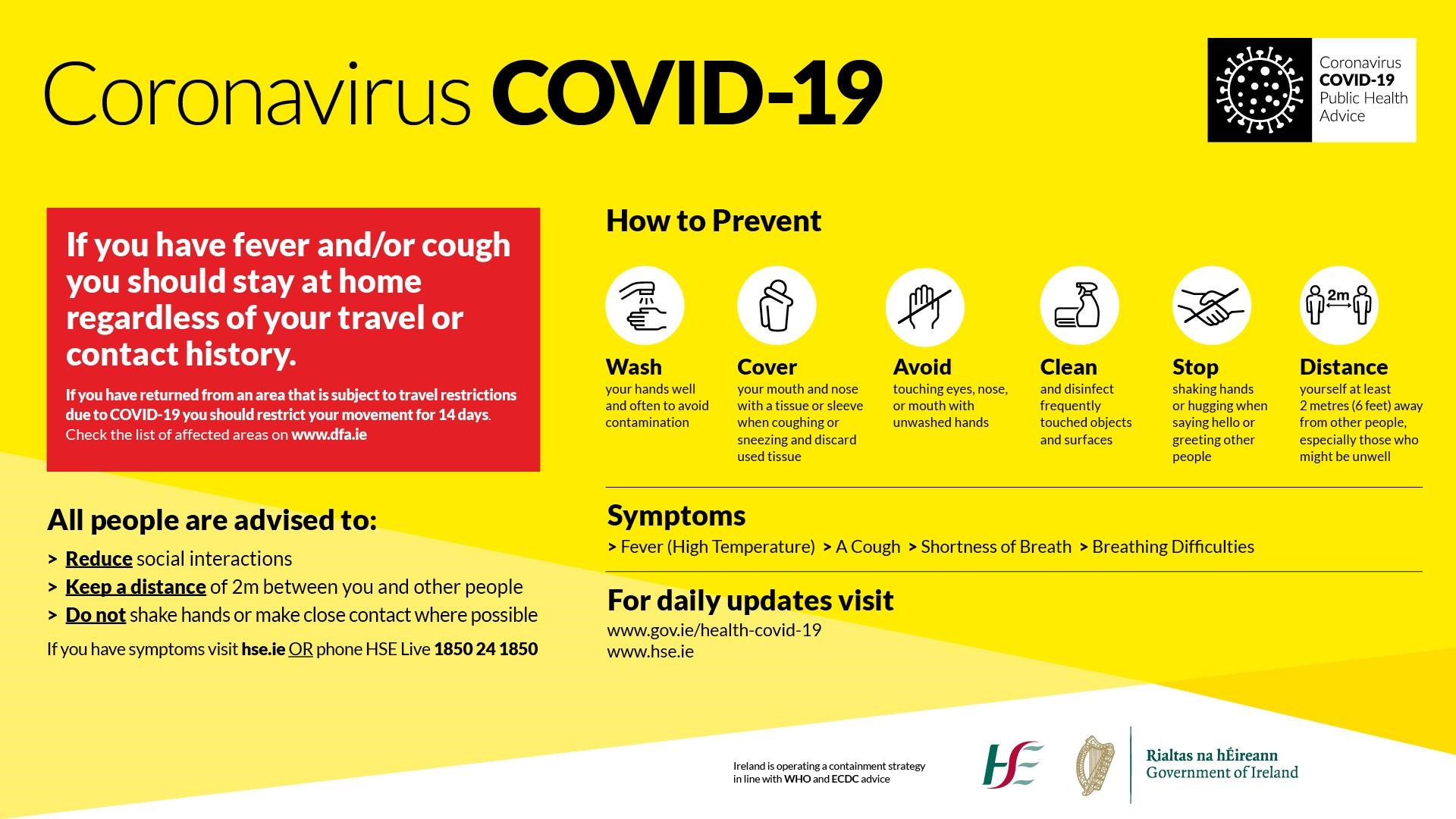
Staff who have symptoms of respiratory illness are recommended to stay home and contact the health service to arrange a test. They should not come to work and should restrict their movements for 10 days from symptom onset, the last five days of which should be fever free.
Staff who are not fully vaccinated and are close contacts of someone who tests positive for COVID-19 should
The CSO follow the advice of the HSE in relation to the requirements for self isolation, restriction of movement and close contacts. These are updated periodically in line with the current public health situation. The latest advice can be found on the HSE website.
You can get COVID-19 if you come into close contact with someone who has the virus.
COVID-19 is mainly spread through close contact and droplets that come from your nose and mouth. For example, from someone who is talking loudly, shouting, coughing or sneezing. This happens most when people are less than 2 metres from each other.
You can also get the virus from surfaces. For example, when someone who has the virus sneezes or coughs, droplets with the virus can fall onto surfaces around them. If you touch that surface and then touch your eyes, nose or mouth, you could become infected too.
Airborne transmission is the spread of a virus in very tiny respiratory particles. This can happen over a longer distance and persist for a longer time than droplets, such as within a room. To minimise this risk, keep indoor spaces well ventilated (aired out) by opening windows and doors if possible.